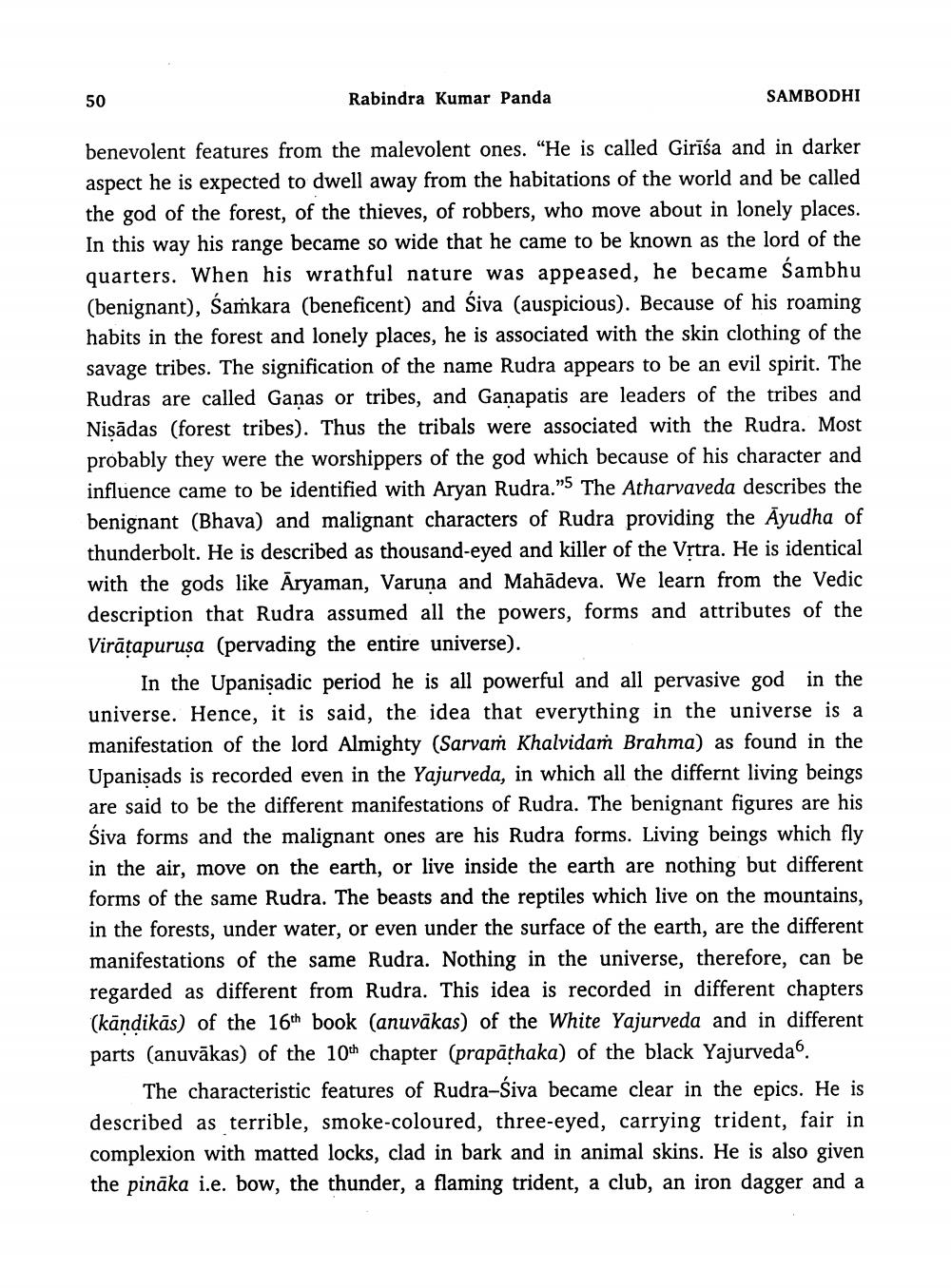________________
50
Rabindra Kumar Panda
SAMBODHI
benevolent features from the malevolent ones. "He is called Girīša and in darker aspect he is expected to dwell away from the habitations of the world and be called the god of the forest, of the thieves, of robbers, who move about in lonely places. In this way his range became so wide that he came to be known as the lord of the quarters. When his wrathful nature was appeased, he became sambhu (benignant), Šamkara (beneficent) and Siva (auspicious). Because of his roaming habits in the forest and lonely places, he is associated with the skin clothing of the savage tribes. The signification of the name Rudra appears to be an evil spirit. The Rudras are called Ganas or tribes, and Ganapatis are leaders of the tribes and Nisādas (forest tribes). Thus the tribals were associated with the Rudra. Most probably they were the worshippers of the god which because of his character and influence came to be identified with Aryan Rudra."5 The Atharvaveda describes the benignant (Bhava) and malignant characters of Rudra providing the Ayudha of thunderbolt. He is described as thousand-eyed and killer of the Vrtra. He is identical with the gods like Āryaman, Varuna and Mahādeva. We learn from the Vedic description that Rudra assumed all the powers, forms and attributes of the Virātapuruşa (pervading the entire universe).
In the Upanisadic period he is all powerful and all pervasive god in the universe. Hence, it is said, the idea that everything in the universe is a manifestation of the lord Almighty (Sarvam Khalvidam Brahma) as found in the Upanisads is recorded even in the Yajurveda, in which all the differnt living beings are said to be the different manifestations of Rudra. The benignant figures are his Siva forms and the malignant ones are his Rudra forms. Living beings which fly in the air, move on the earth, or live inside the earth are nothing but different forms of the same Rudra. The beasts and the reptiles which live on the mountains, in the forests, under water, or even under the surface of the earth, are the different manifestations of the same Rudra. Nothing in the universe, therefore, can be regarded as different from Rudra. This idea is recorded in different chapters (kāndikās) of the 16th book (anuvākas) of the White Yajurveda and in different parts (anuvākas) of the 10th chapter (prapathaka) of the black Yajurveda.
The characteristic features of Rudra-Śiva became clear in the epics. He is described as terrible, smoke-coloured, three-eyed, carrying trident, fair in complexion with matted locks, clad in bark and in animal skins. He is also given the pināka i.e. bow, the thunder, a flaming trident, a club, an iron dagger and a




